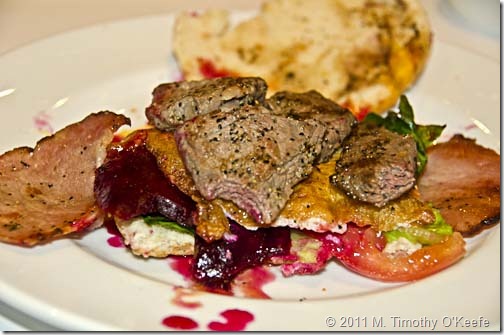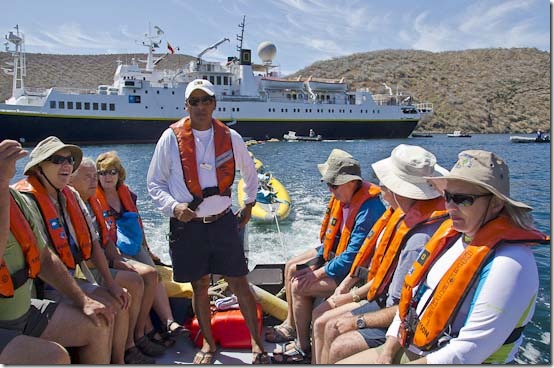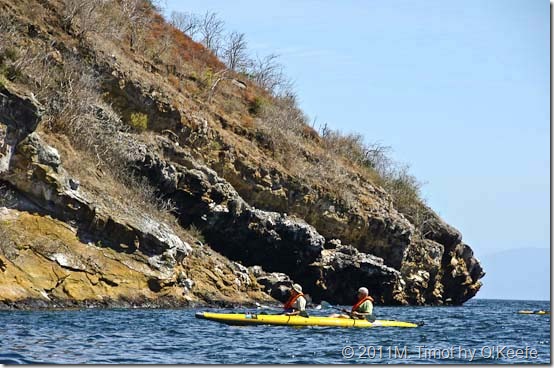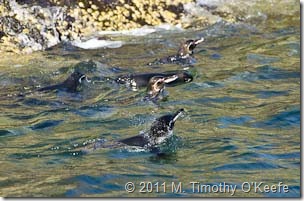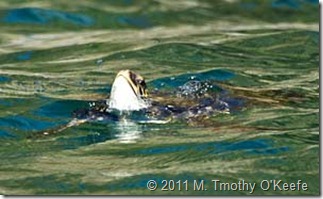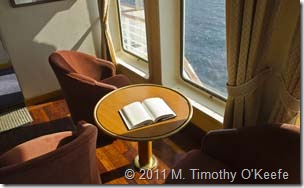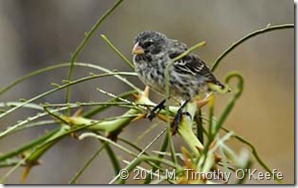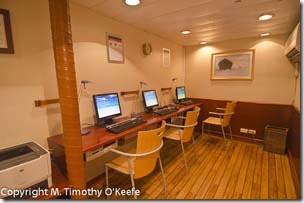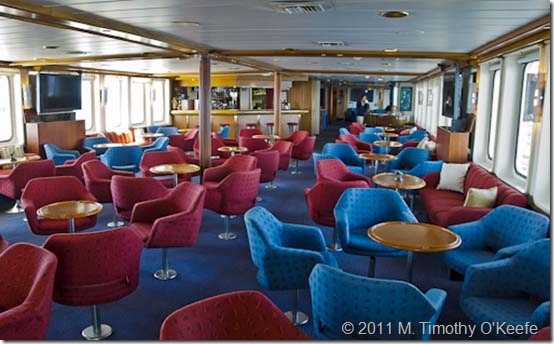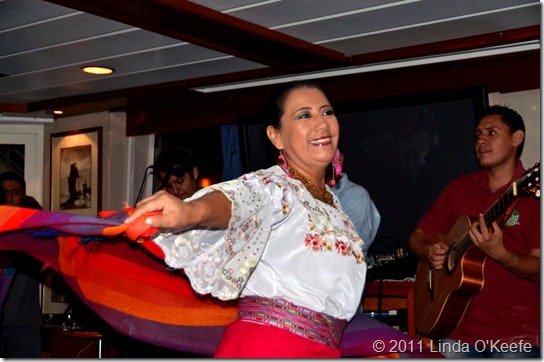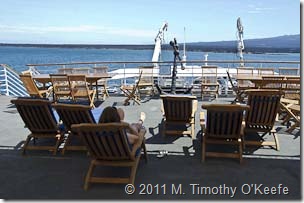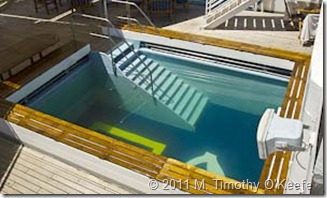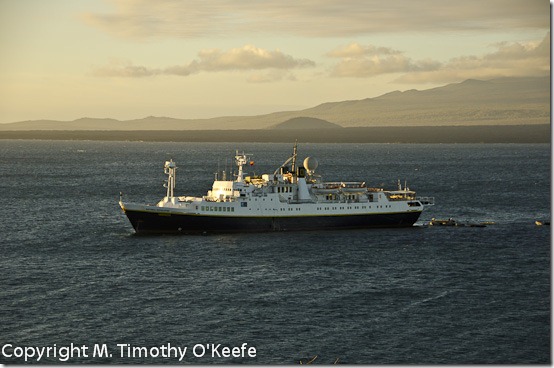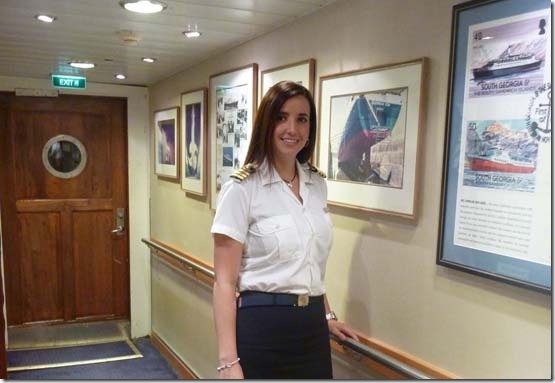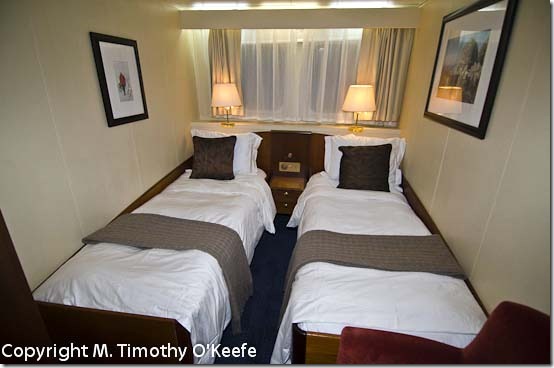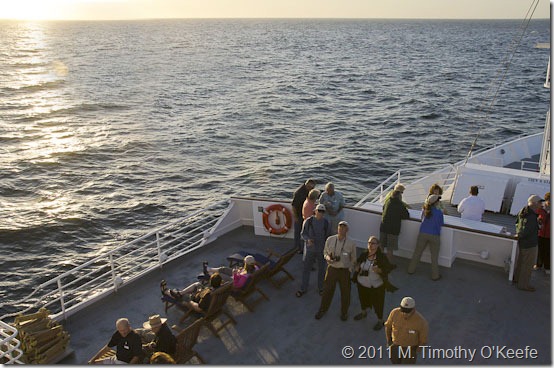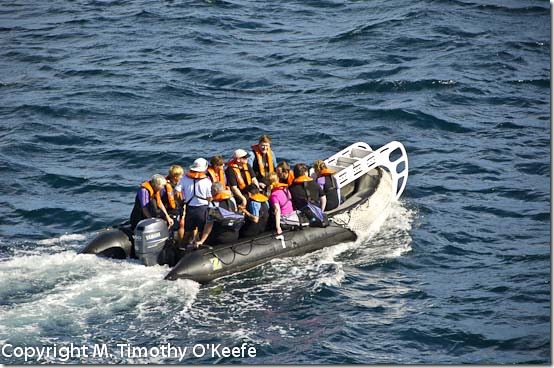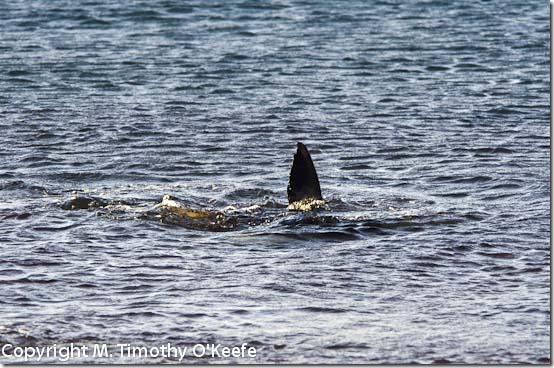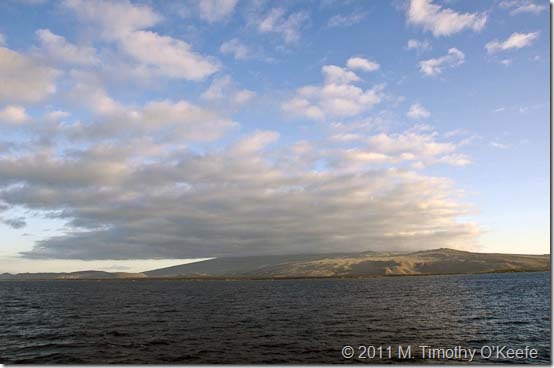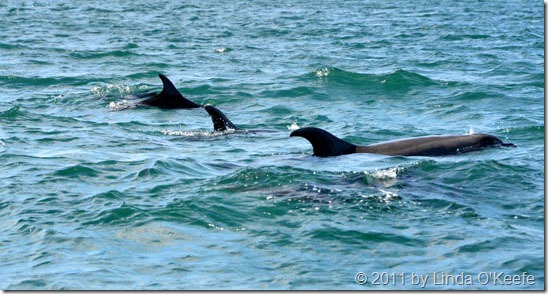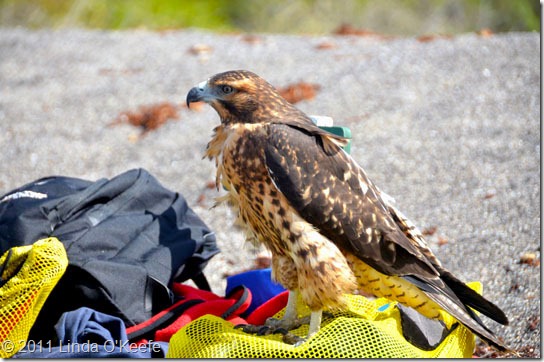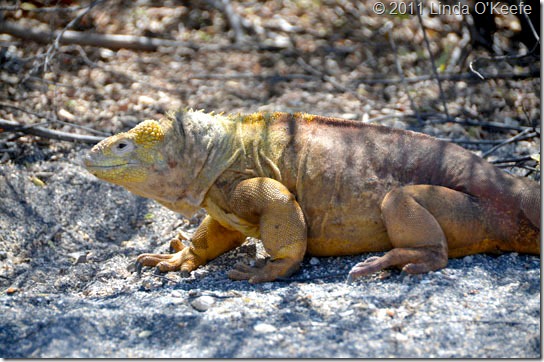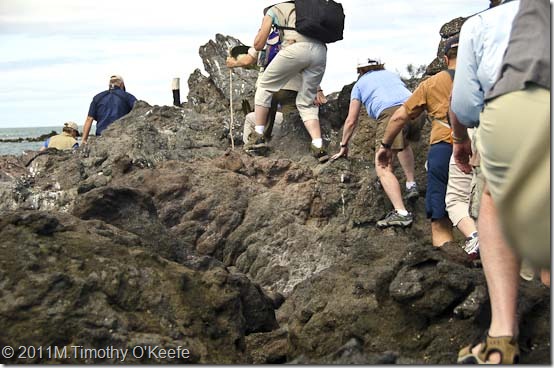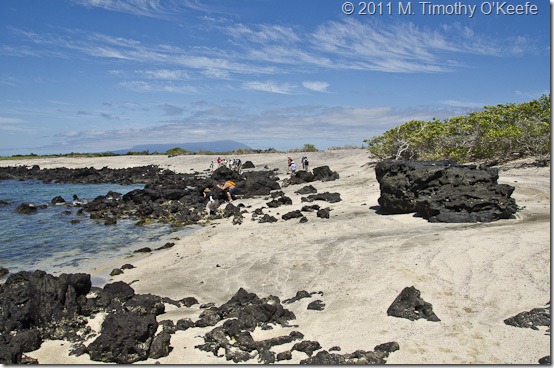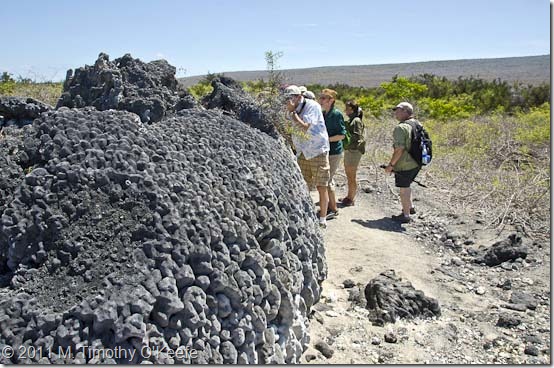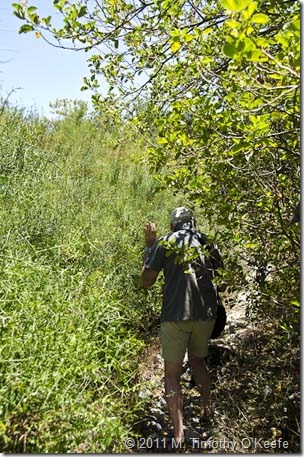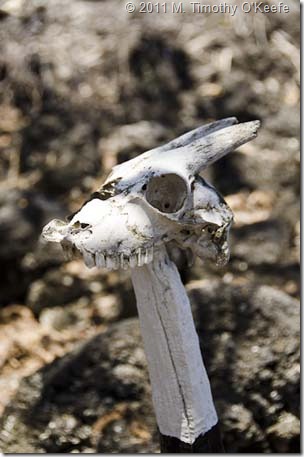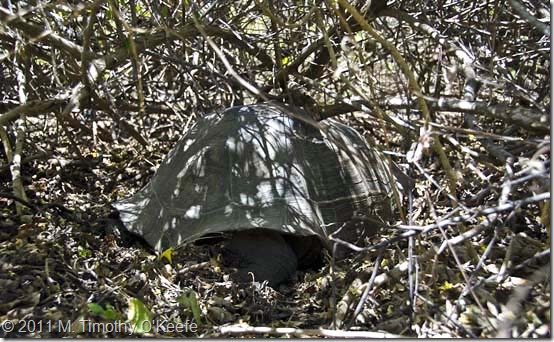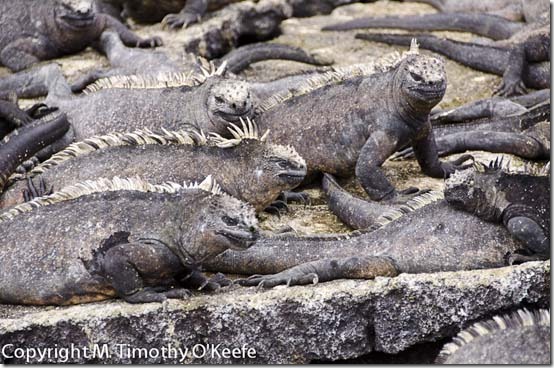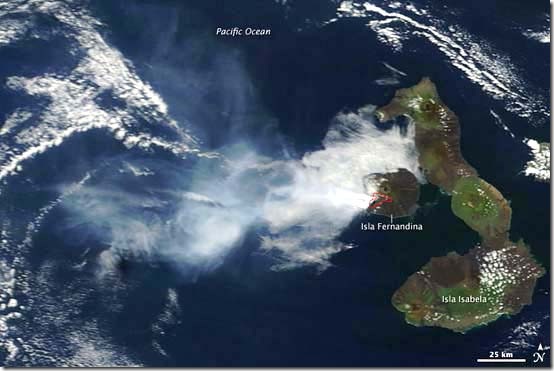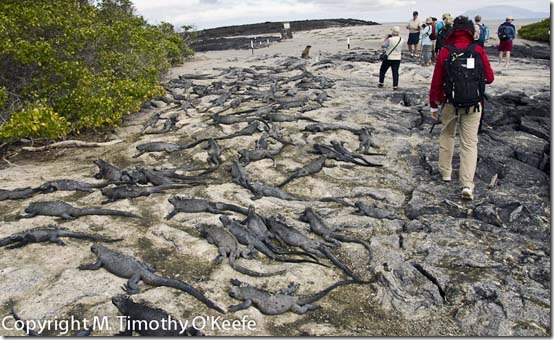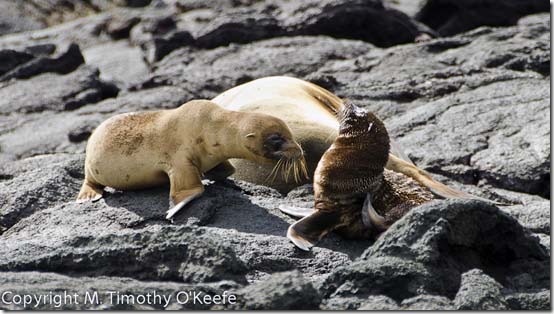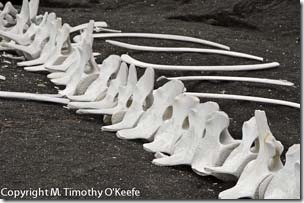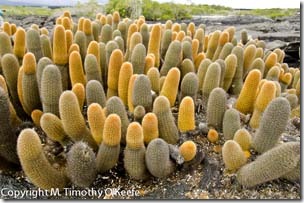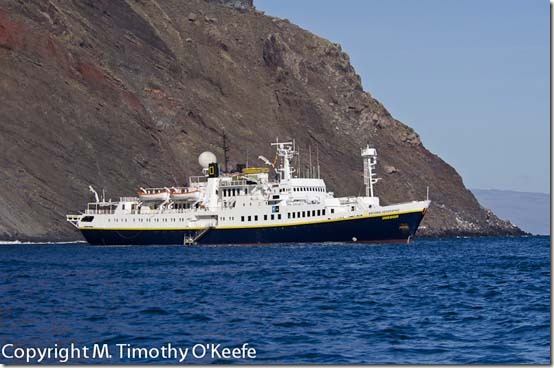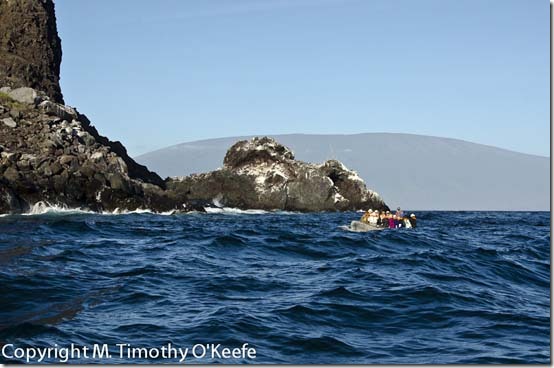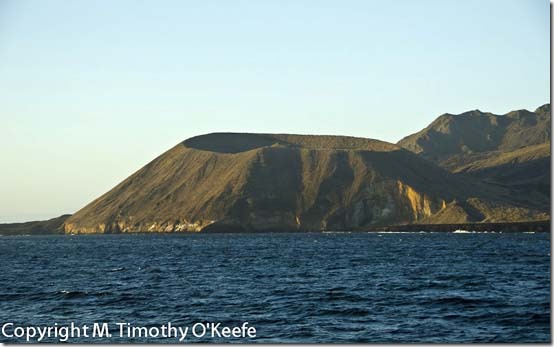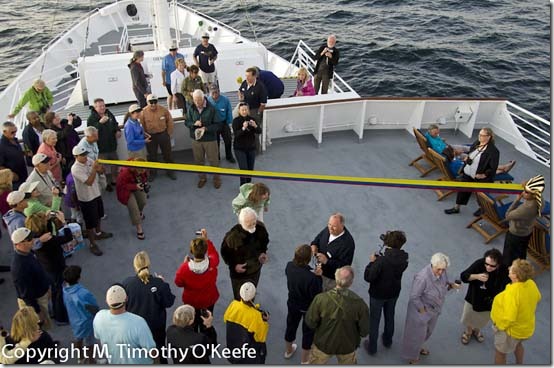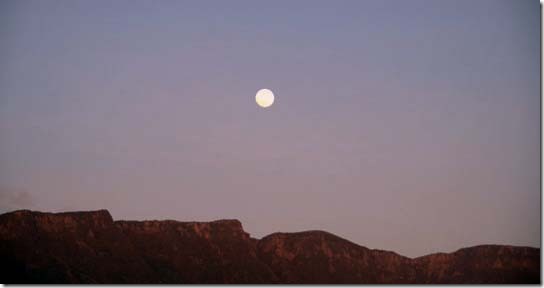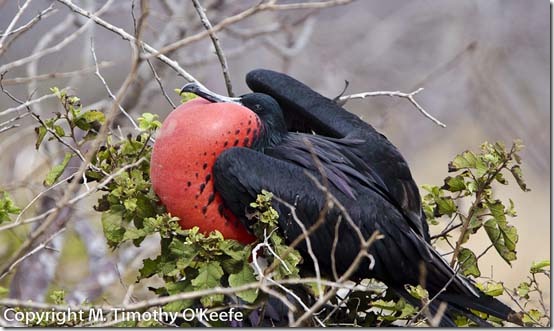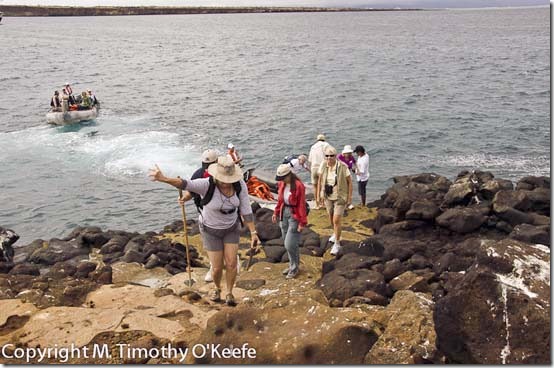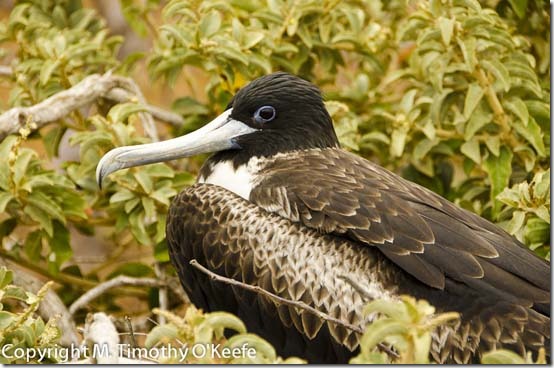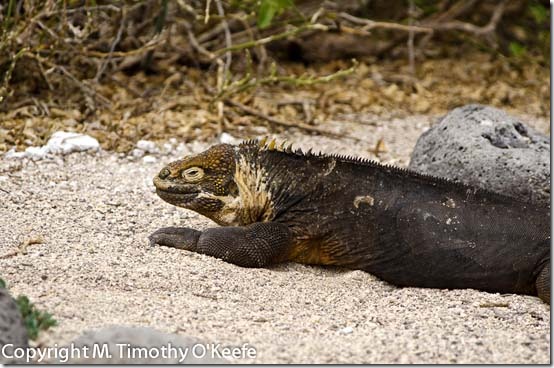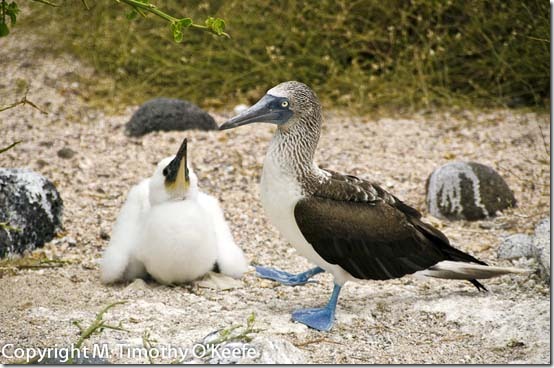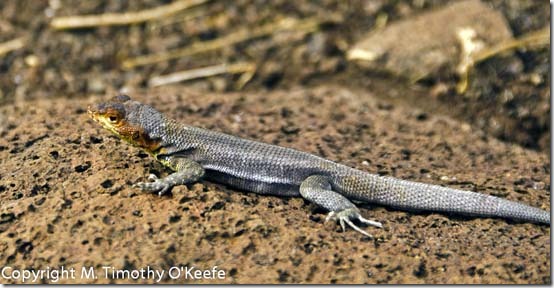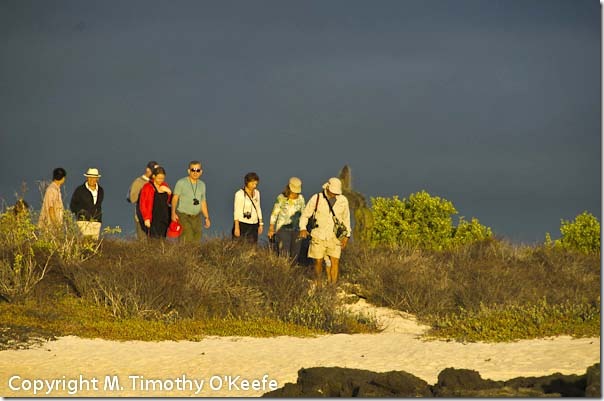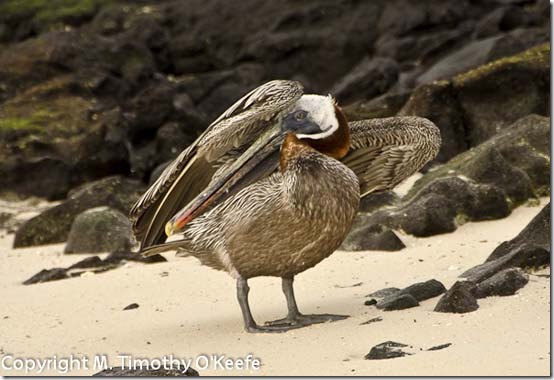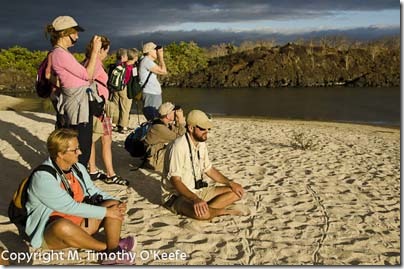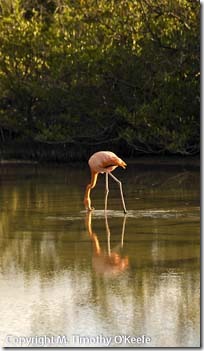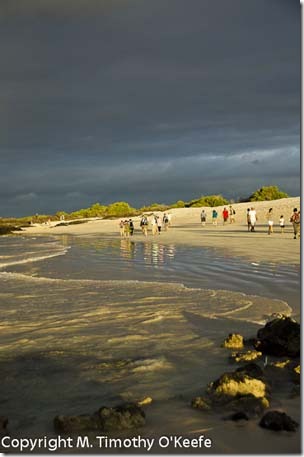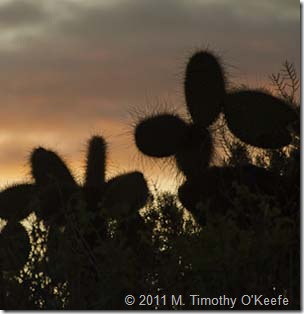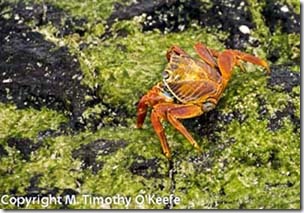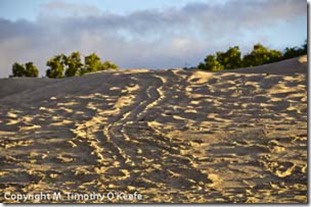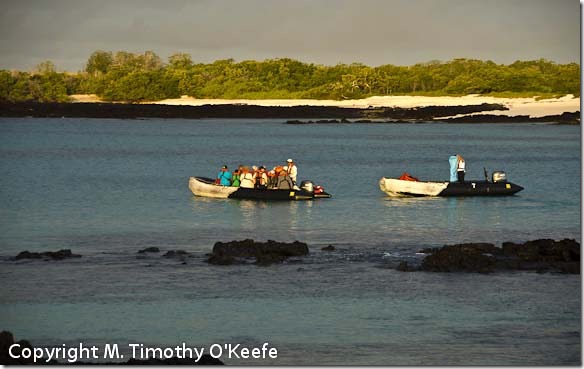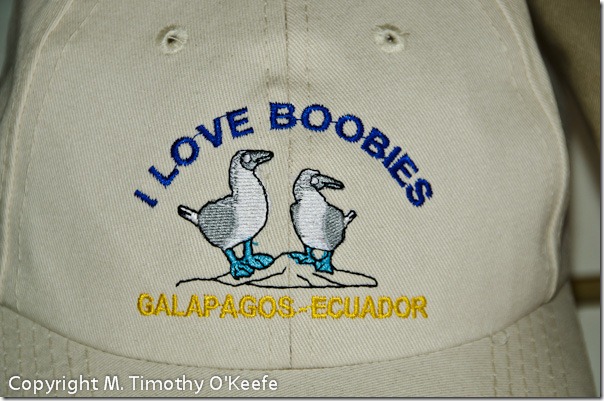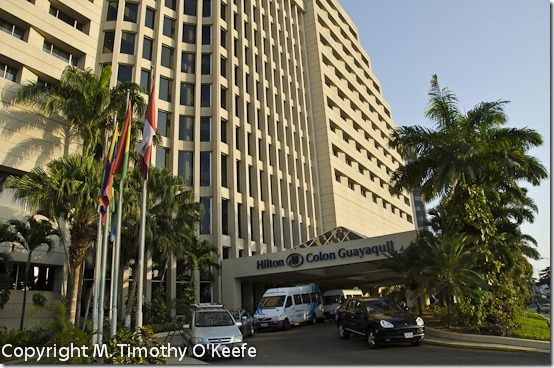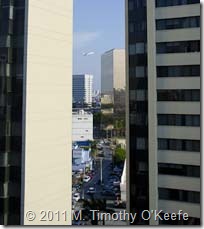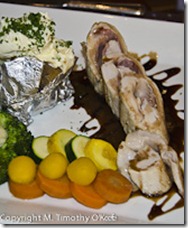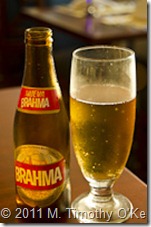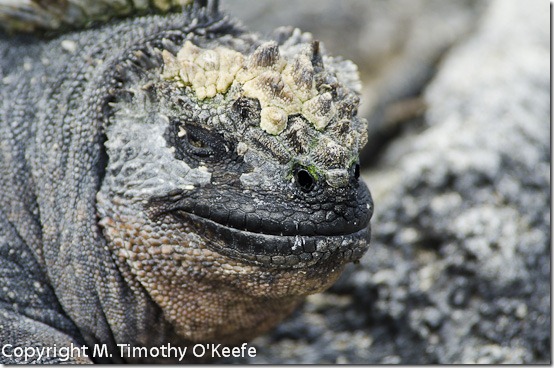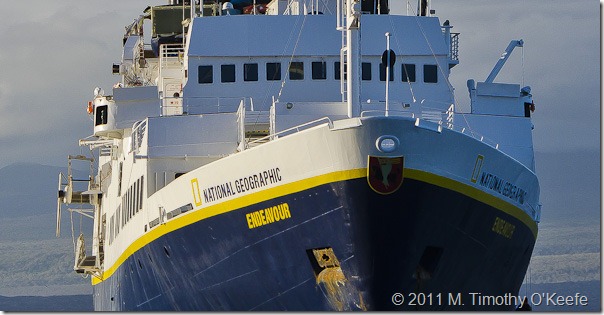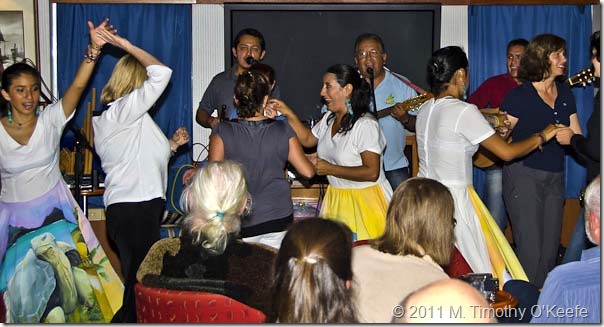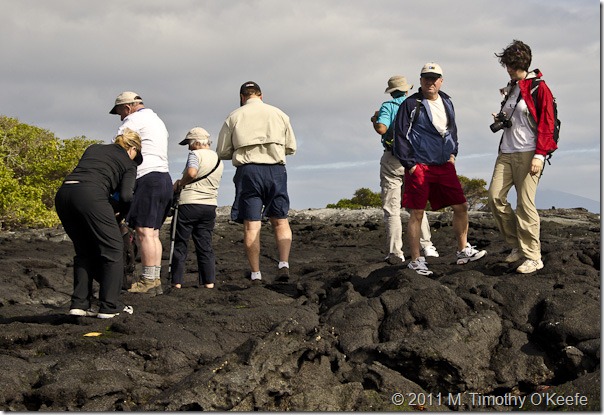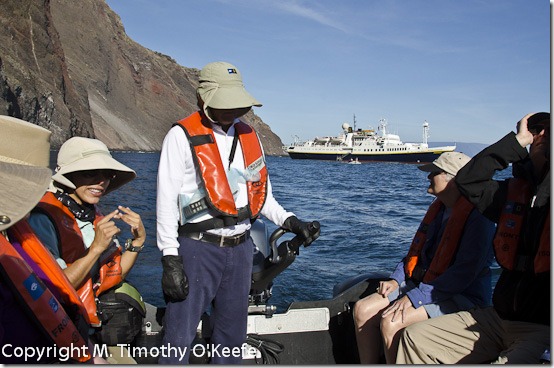One perfect afternoon at Puerto Egas, where wildlife offer warm welcome
Everyone who takes a Galapagos cruise usually has a favorite shore landing. Mine comes almost midway through the trip when Lindblad’s National Geographic Endeavour calls at place called Puerto Egas on Isla Santiago (also known as James Island and Isla San Salvador). It is my ideal Galapagos experience.
On our afternoon stop there, everything comes together. The sunlight is gorgeous and we encounter a good variety of birds and mammals. We also witness lots of lively animal interaction, including a large bellowing male Galapagos fur seal. Best of all, this is one of the most leisurely walks, without the usual and constant push to keep moving.
Ironically, when Lindblad’s National Geographic Endeavour arrives and anchors off Isla Santiago, there is no hint this will be a special afternoon. Instead, once our Zodiac lands on a narrow rocky beach, the scenery is almost depressing.
Signs of human intrusion
A dilapidated house sits on a small cliff above where we stand. When we approach for a better view, the old deserted homestead and its empty, fenced-in fields seems even more dismal.
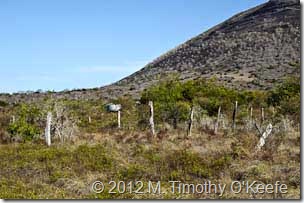
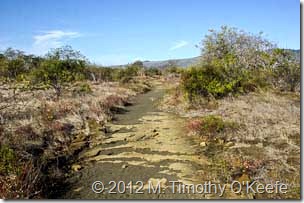
Jarring reminders of the humans who once lived here
There may be 30,000 people living in the Galapagos, but this is the first evidence of human occupation we’ve seen since sailing from Baltra on Saturday morning. This unexpected detritus of human intrusion is an irritating reminder of past efforts to harvest salt here, first between 1928 and 1930, then much later in 1964.
Both attempts invariably caused environmental damage by using native and endemic trees for firewood and also introducing new plants and animals. The Puerto Egas name, in fact, refers to the last salt company operation, run by Hector Egas whose venture failed when the price of salt in South America became so cheap that operating in the Galapagos was impractical.
Exploring tidal pools
Thankfully, we quickly leave the settlement area and make the short walk across the island’s narrow point to the other side, which is surprisingly different. It’s long black lava coastline that seems to extend endlessly along James Bay, where Charles Darwin’s ship anchored and he explored the interior of Santiago Island.
The shore, comprised of an old lava flow that poured into the ocean, has many large inlets and tidal pools created by the erosive force of the rough wave action. One of these inlets, a vertical chute where the water rises and ebbs as waves regularly crash against the rock, carries the appropriate if undignified name of “Darwin’s toilet.”
This lava shoreline is a favorite haunt of fur seals, the smallest of the pinnipeds and creatures we really haven’t encountered closely before. Endemic to the Galápagos Islands, the fur seals are spread throughout the islands. They number about 40,000, a much smaller than just a few decades ago. Scientists say the fur seal population declined significantly in the 1980s due to the effects of El Nino, which reduced the local fish populations.
The best known place to see fur seals is Gruta de las Focas. It has a natural bridge above the inlets where fur seals likee to sun themselves. Galápagos fur seals are the most land-based of all the fur seals. They spend about 30 percent of their time out of the water.
They do most of their fishing at night. Then they can spend much of the day warming themselves on the lava rocks. Photographers appreciate this kind of availabiolity.
American oyster catchers were common place at Puerto Egas
Climate change impacts
Hopefully, they will be as prevalent here and throughout the Galapagos in coming years since the current climate change seems to have prompted an ambitious group of Galapagos fur seals to look for better fishing waters in Peru. No one is sure why, perhaps because there are more fish there.
This migration happened in 2010 when a group of Galapagos fur seals traveled 900 miles (1,500 km) to the northern waters of Peru and established a colony there, the first recorded instance of Galapagos seals migrating from their homeland.
Rising water temperatures have been credited as the motivation but the water still averages warmer in the Galapagos. Water temperatures off northern Peru have increased from 62F (17C) to 73F (23C) in the past 10 years; Galapagos water temps average 77F (25C). It’s speculated more such colonies might be established in northern Peru. Still think it’s due to better fish populations in Peru and not the water temperature.
Darwin paid scant attention to the fur seals during his visit, perhaps because fur hunters had almost hunted the animals to extinction. On this day fur seals are prominent at Puerto Egas, along with Sally Lightfoot crabs, marine iguanas, American oyster catchers, a Galapagos hawk and more.
Fur seals and sea lions romp
Two fur seals are in a contest with a sea lion to dislodge the sea lion from its flat rock perch just above the waves. The sea lion ignores the fur seals’ loud noises and aggressive threats, holding its head high with an expression we interpret to mean something like “Well, here goes the neighborhood!”
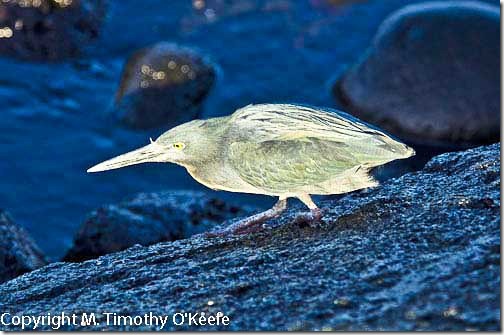 Lava gull stalking the Puerto Egas tidal pools
Lava gull stalking the Puerto Egas tidal pools
The matter is semi-resolved when one of the fur seals jumps on an adjoining rock and gradually nudges its way into sharing part of the platform. The sea lion refuses to retreat and both animals end up appearing to have reached a compromise for the space.
The second fur seal stays in the water, preferring to swim around and keep out of the way. Once the action subsides, we wander away, careful not to trip over or step on the marine iguanas strung out on the lava surface like washed-up seaweed.
As we walk the shoreline in the direction of the ship, it’s obvious the Puerto Egas tidal pools are attracting the largest variety of birds we’ve ever seen in one location. Even several Darwin finches land in the trees bordering the shoreline only a few yards behind the beach.
I lag behind the others for the unusually prime photo ops. It’s what photographers call the “golden” or “magic” hour, very close to sunset, and the colors are amazing. This one afternoon almost makes up for the cloudy days we’ve had to work around most of the trip.
Galapagos hawk and marine iguanas
When I finish photographing the birds in the tidal pools, I catch up with my group and see they are watching a Galapagos hawk dine on a sizable marine iguana. We are perhaps 20 yards from the hawk, which is well aware of our presence but continues to feed while keeping an obvious watch on us. We’ve seen numerous marine iguanas along the coast, more than in most places, and it’s not surprising there would be a natural death the hawk would take advantage of. The hawk carefully watches on us as we photograph/view it.
We’ve seen numerous marine iguanas along the coast, more than in most places, and it’s not surprising there would be a natural death the hawk would take advantage of. It certainly couldn’t have carried here something this size. The iguana seems as large as the hawk, so the bird shouldn’t have to scavenge for several more days.
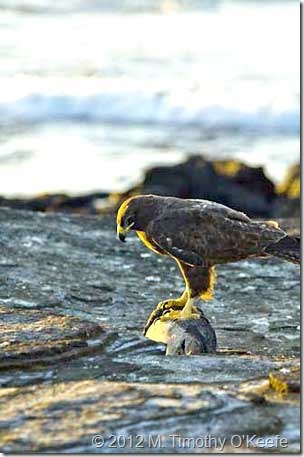
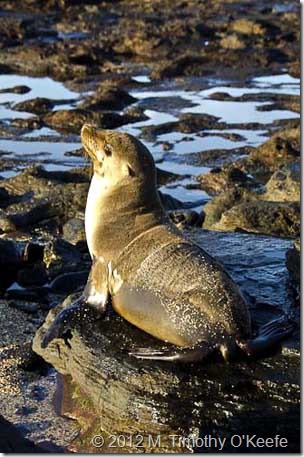
Galapagos hawk feeds on its prize meal; a fur seal pup.
A fur seal and his harem
My day’s highlight comes near the end of our walk where we encounter a huge male fur seal with his harem. The males are supposed to grow no larger than 5 feet (1.5m) in length and weigh no more than about 145 pounds. This fellow not only looks much larger and scarily impressive because he sits on a rock plateau just a few feet above us.
Seen in profile, this huge male should emphasize why the Galapagos fur seal’s scientific name is Arctocephalus galapagoensis, from Greek words meaning “bear headed.” to my, it doesn’t. It has a short, pointed muzzle and a small, button nose.
The muzzles of bears I’ve seen are considerably longer and the noses hardly button-size. But when the male fur seal starts bellowing at one of his concubines, he draws his lips back and flashed sharp, triangular teeth that did make me think of something as deadly as a bear.
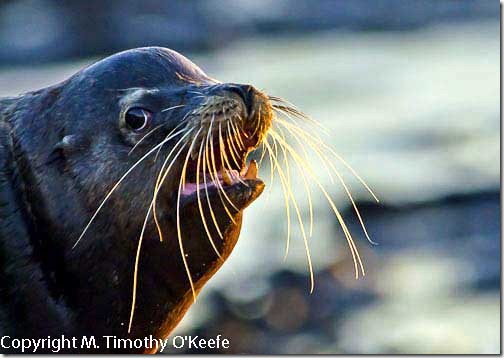 Male fur sea offering us some advice: “Stay away!”
Male fur sea offering us some advice: “Stay away!”
Dominant male fur seals are enormously protective of their breeding territory, often required to challenge and chase away challengers. This fellow also obviously expends a lot of effort trying to keep his women in line, though he doesn’t seem to have much success.
Fur seal courting and rejection
He appears to be loudly coaxing, or whatever—with hands, he might act like a gorilla beating its chest–to impress the only female on the platform with him. She acknowledges his “whatever,” occasionally swaying her head like a boxer in the ring, but eventually just turns and descends to join the other girls below him.
Our guide (a woman) explains, “She’s out to prove she wants more than a one-night stand. He needs to step up his game and romance her.”
It seems absurd that a creature this size and fearsome could ever court (date?) a mate. But male whales do it. Male sharks do it. Magnificent frigate birds do it (remember those big red sacs?). Male blue-Footed Bobbies do it (by building impressive nests and their dancing). Uh, even human males do it. But instead of impressive nest building, we’ve evolved to dinner, a show, a sports event or not even acting in person, just text messaging.
In the Galapagos, you realize a lot about life and love.
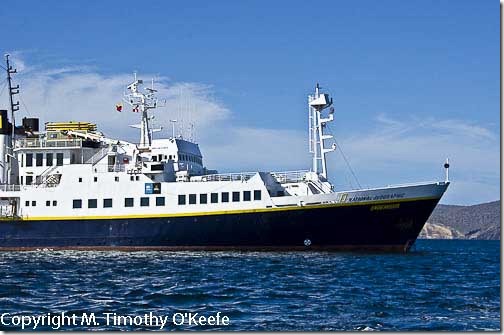 Lindblad’s National Geographic Endeavour off Puerto Egas
Lindblad’s National Geographic Endeavour off Puerto Egas
Lindblad Endeavour Galapagos Cruise Links
The Galapagos Experience Endeavour Dining
Galapagos Adventure Upcoming Sustainable Dining Policy
How Darwin Saved The Galapagos Saturday Dining Menus
Galapagos Photo Tips Sunday Dining Menus
What To Pack For Cruise Monday Dining Menus
Getting to Guayaquil Tuesday Dining Menus
Las Bachas Shore Landing Wednesday Dining Menus
North Seymour Shore Landing Thursday Dining Menus
Fernandina & Isabela Islands Friday Finale Menus
Urbina Bay Shore Landing Endeavour Recipes
Life Aboard The Endeavour
More About Life On Board
Puerto Egas Shore Landing
Endeavour’s Floating SPA
Meeting One of World’s Rarest Animals
Puerto Ayoro Walking Tour
Santa Cruz Highlands Tour
Hunting Tortoises in the Santa Cruz Highlands
San Cristobal, Endeavour’s final stop

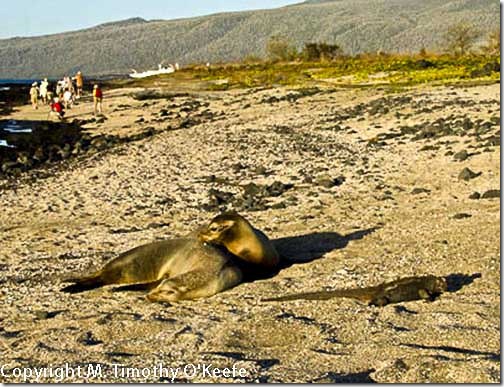
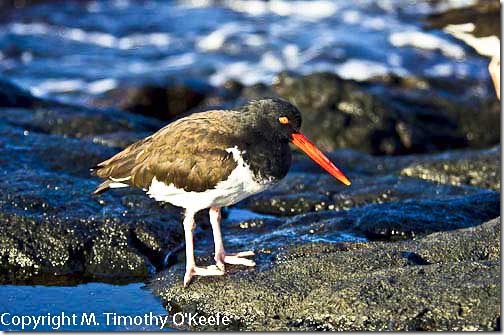
 Follow
Follow
